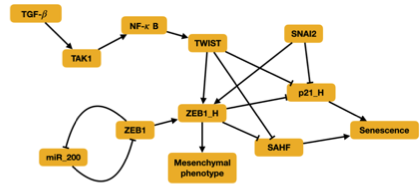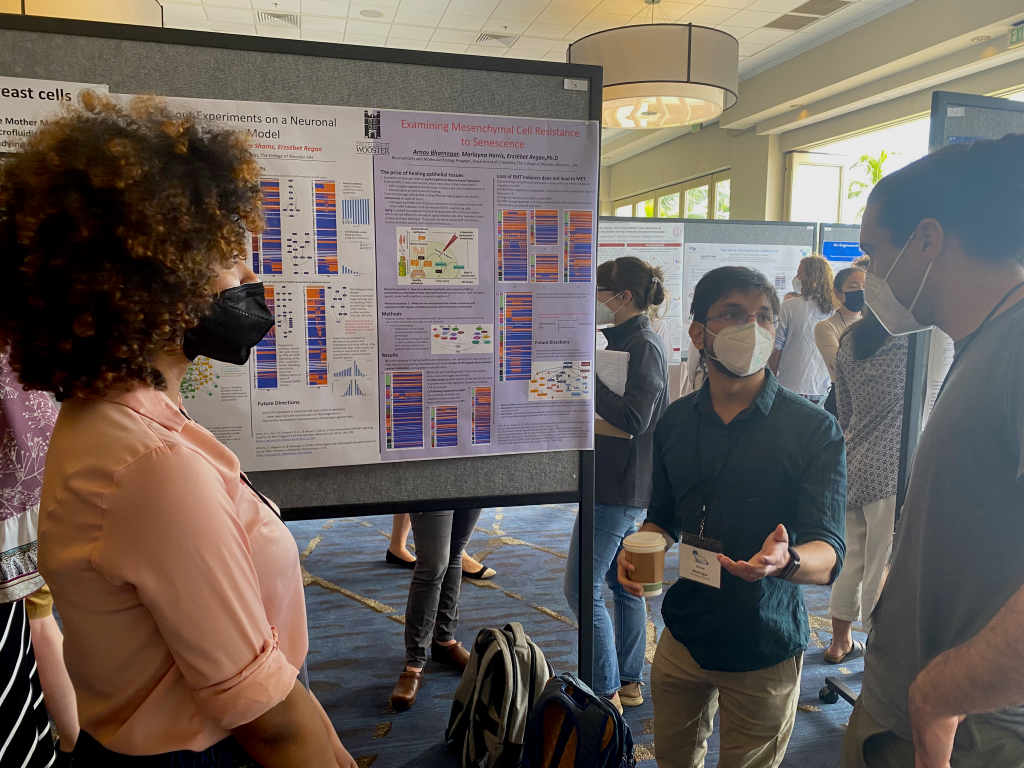Boolean Model of Mesenchymal Cell’s Resistance to Chromosomal Senescence
Class of 2022
Biography

- Education
- Padma Seshadri Bala Bhavan Sr. Sec. School, Chennai, India, 2018
- The College of Wooster, BA in Biochemistry and Molecular Biology, 2022
- Professional experience
- Indian Navy, volunteer
- The College of Wooster, Research Assistant, Teaching Assistant
IS Thesis Abstract
Epithelial carcinoma is a type of cancer which begins in the cells that line an organ, affecting the epithelial layer. Metastasis of cancer is a condition where the cancer cells from one site moves to another, this condition has a very low cure rate. Epithelial to Mesenchymal Transition (EMT) leads to loss of polarity and migratory property of epithelial cell, leading to mesenchymal cell. The resistance to entry to senescence is one property of mesenchymal cells, which allow for mesenchymal cells to avoid proliferation regulation. Senescence is the natural mechanism to permanently arrest a cell’s cell cycle, dismantling the division of cells. The resistance to enter senescence by mesenchymal cells is well documented, but there are no molecular models that detail the mechanisms required and the contexts in which it occurs. The added problem to this is that the transition from Mesenchymal cells to senescence cells pathway is not widely understood, with different research papers pointing to different key regulator of the pathway. Currently our model has external environmental factor with Extracellular Matrix, Growth Factor signals, Apoptosis, and DNA damage. The model has internal regulators: EMT, Senescence (Mitochondrial and Chromosomal), Contact Inhibition, Adhesion, Restriction Switch, and Migration. The model also contains a crosstalk between EMT and senescence which hasn’t been previous modelled, this was by the addition of the TGF-𝛽 signaling and SAPS nodes. The resistance of entry to senescence by mesenchymal cells is through Zeb1 control, the rewiring with TWIST and SNAI2 will help protect ZEB1 levels and maintain mesenchymal phenotype. The addition of NOX4 will help include ROS signaling as a control over senescence from mesenchymal phenotype genes (EMT gene target). p53, p21, p38_MAPK and ROS rewiring will make the senescence pathway more prone to mesenchymal control which has been lacking in the model.


Webpage: https://www.linkedin.com/in/arnav-bhatnagar-a560a41b2/
